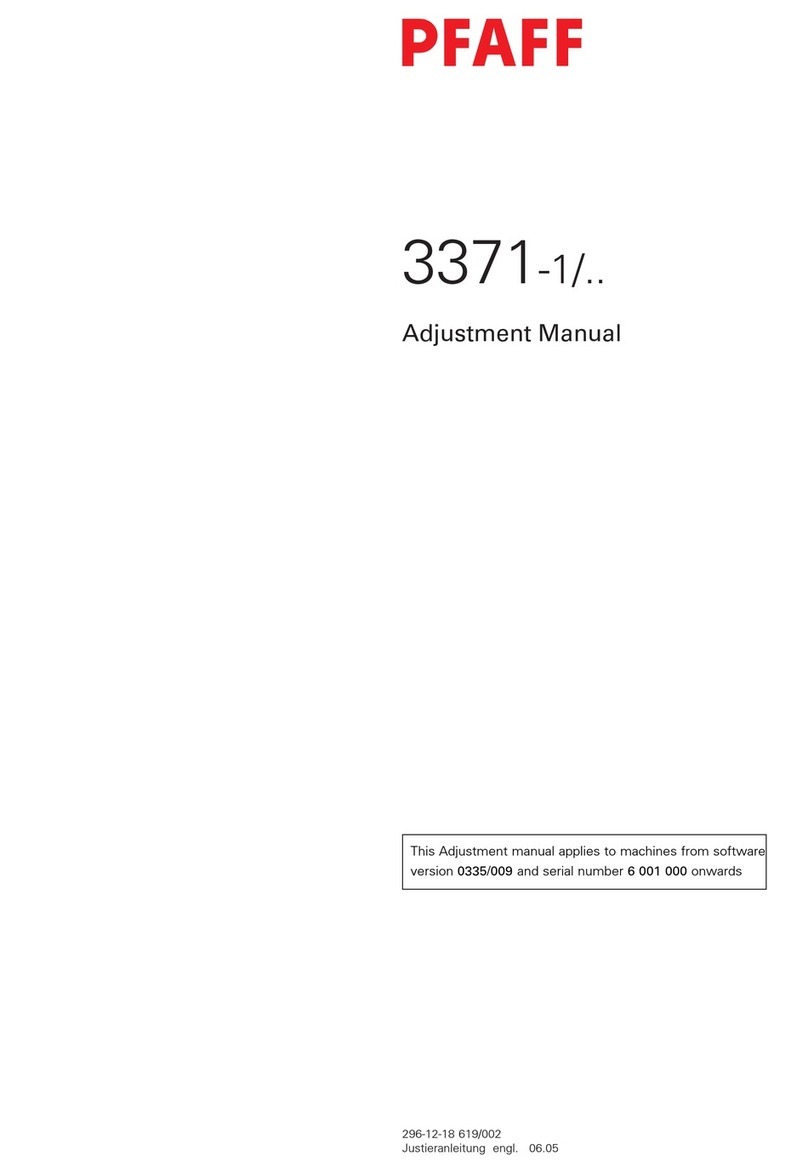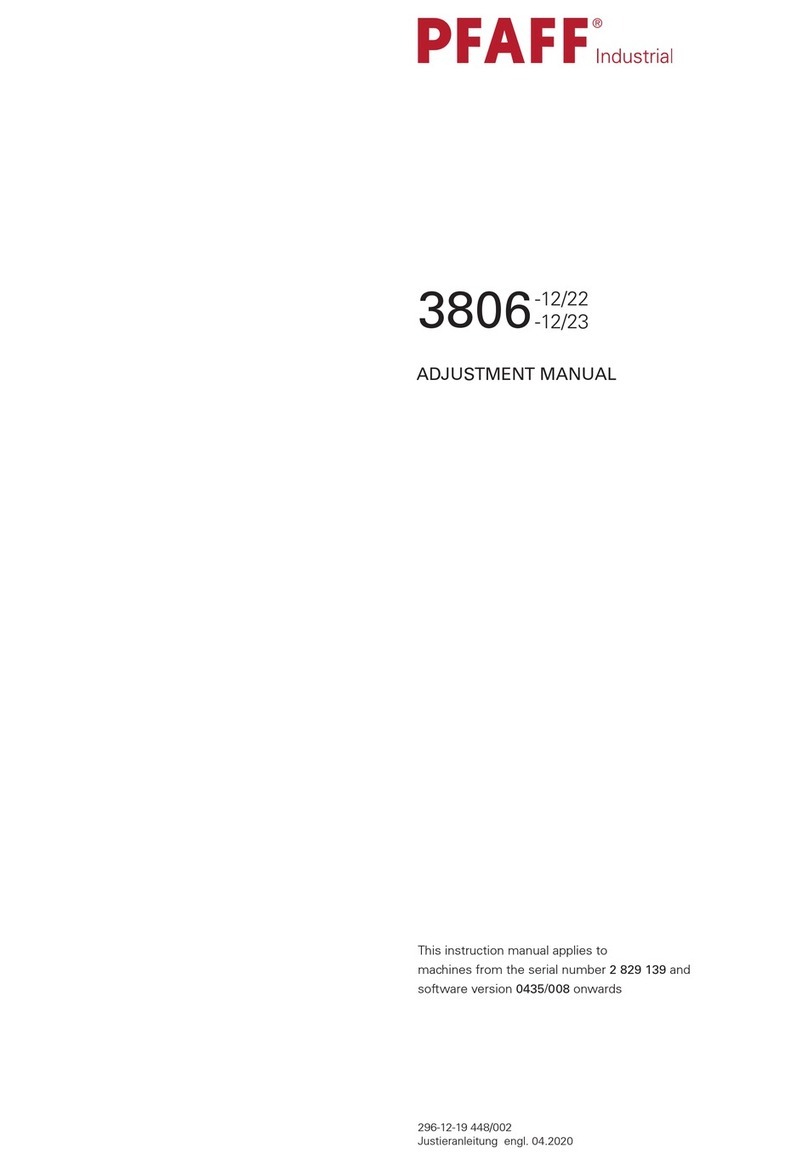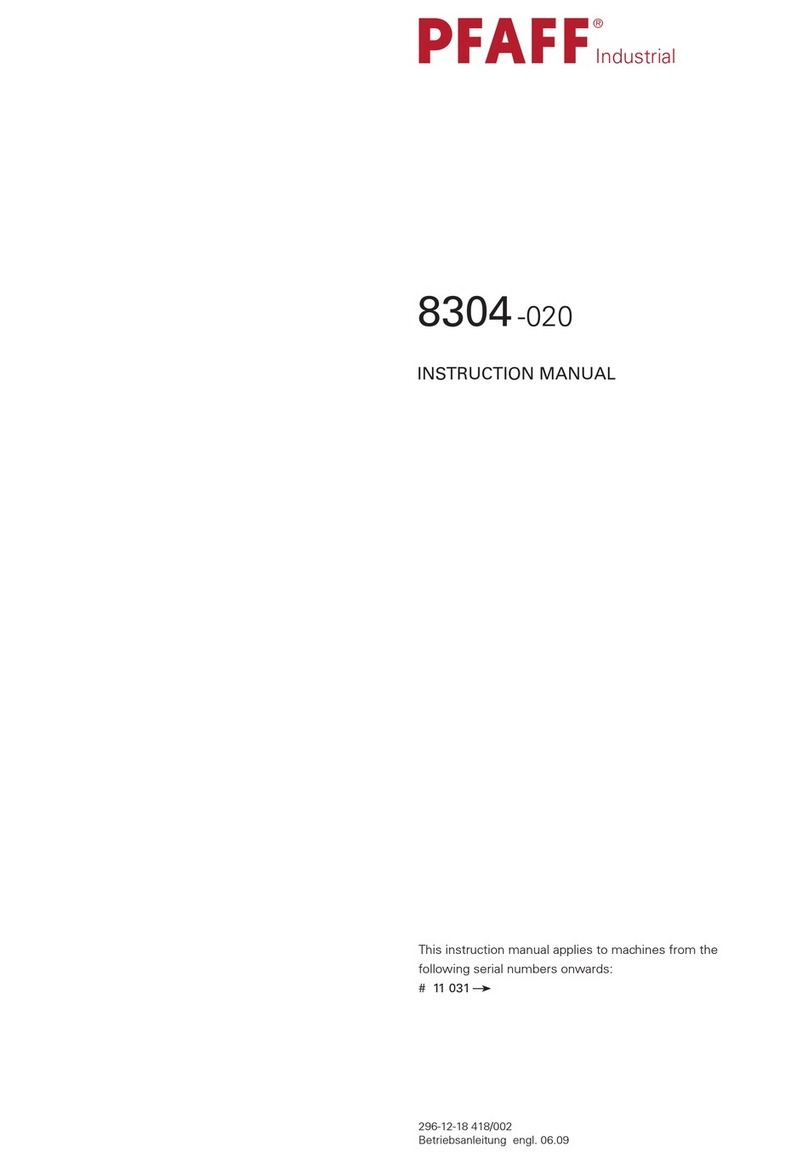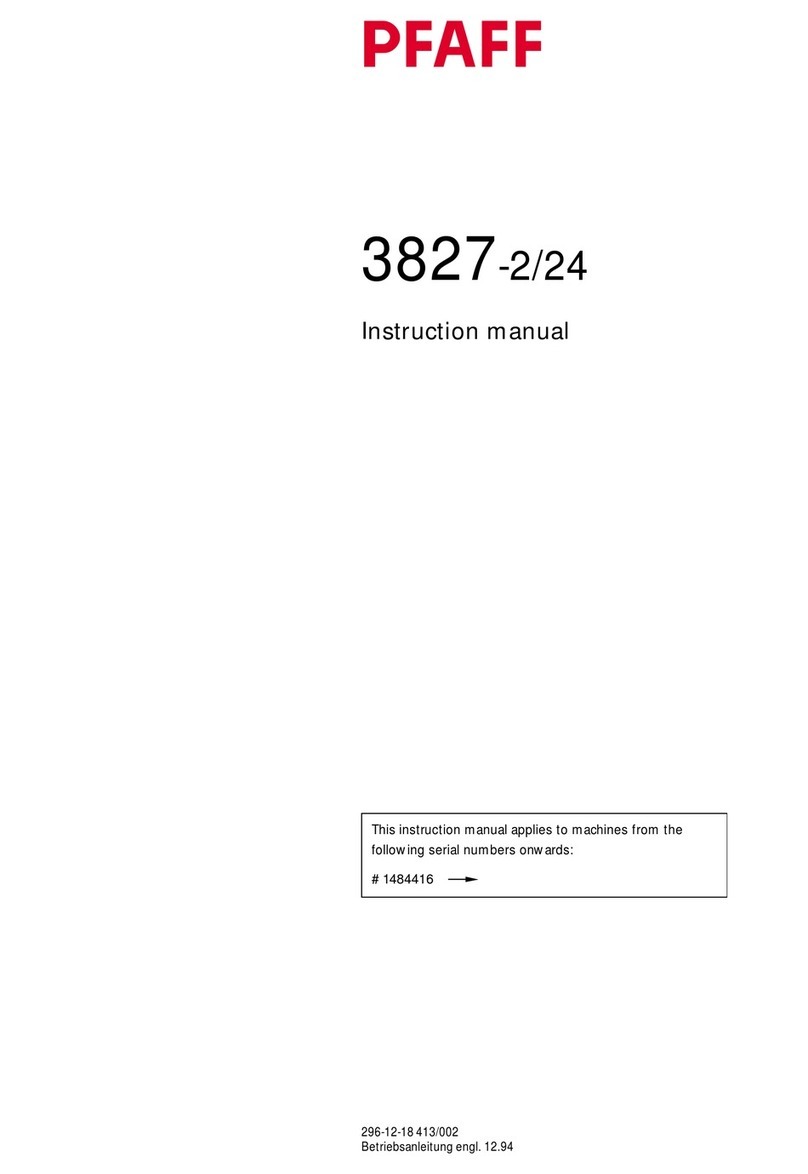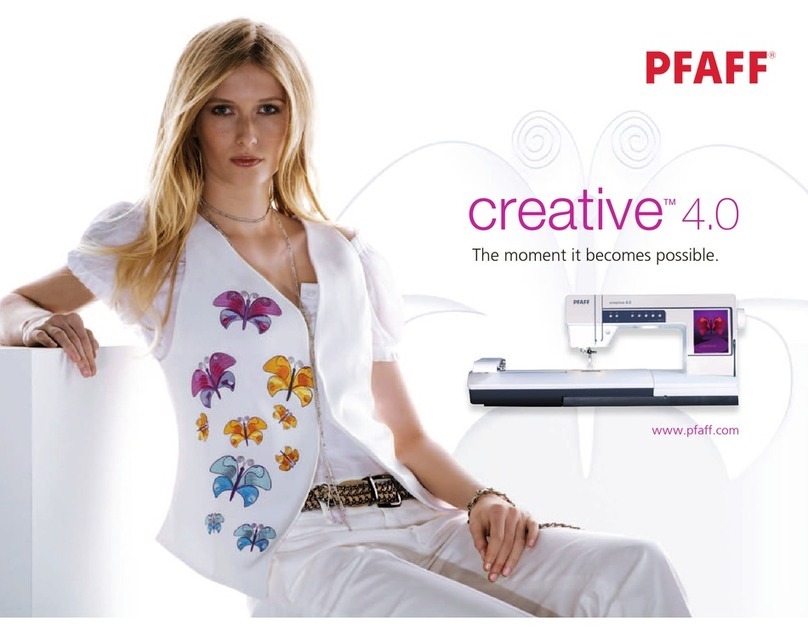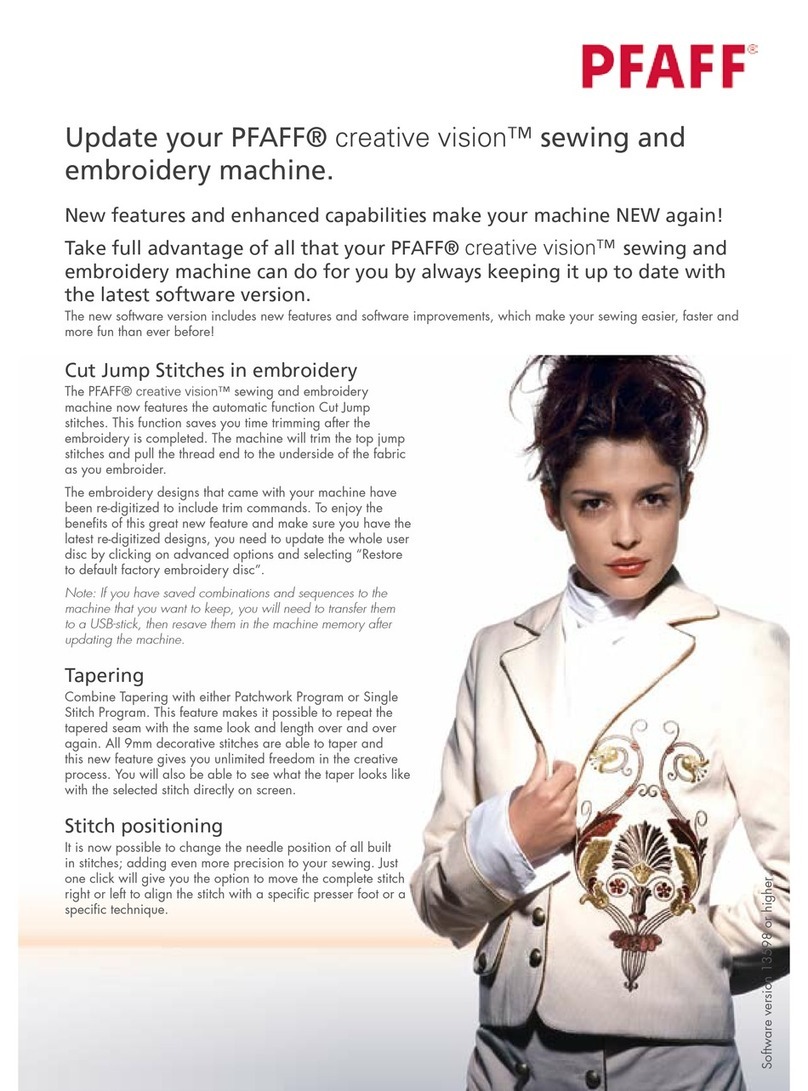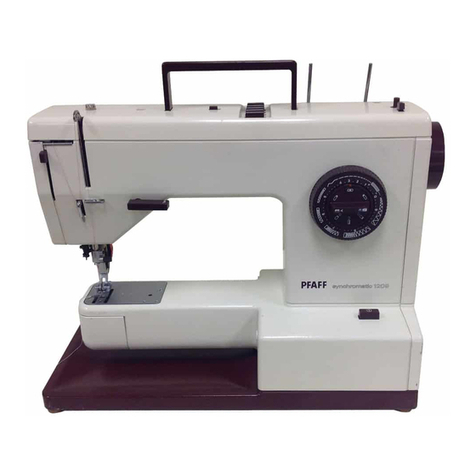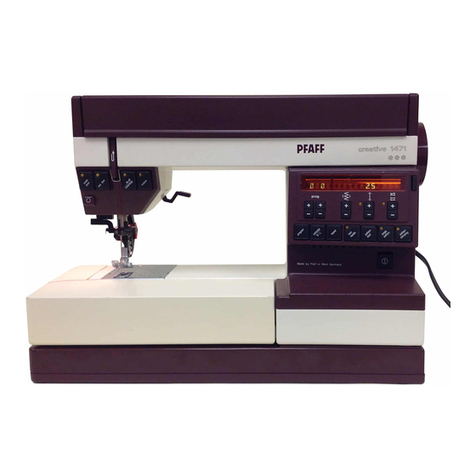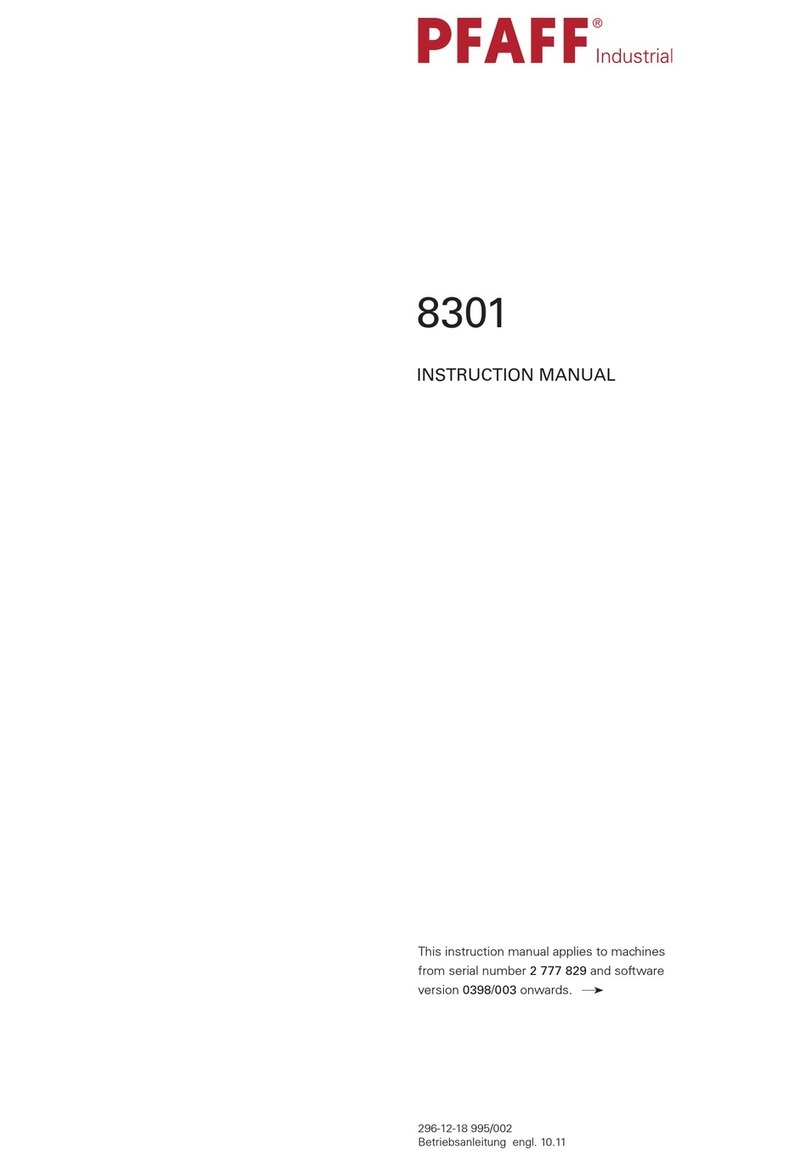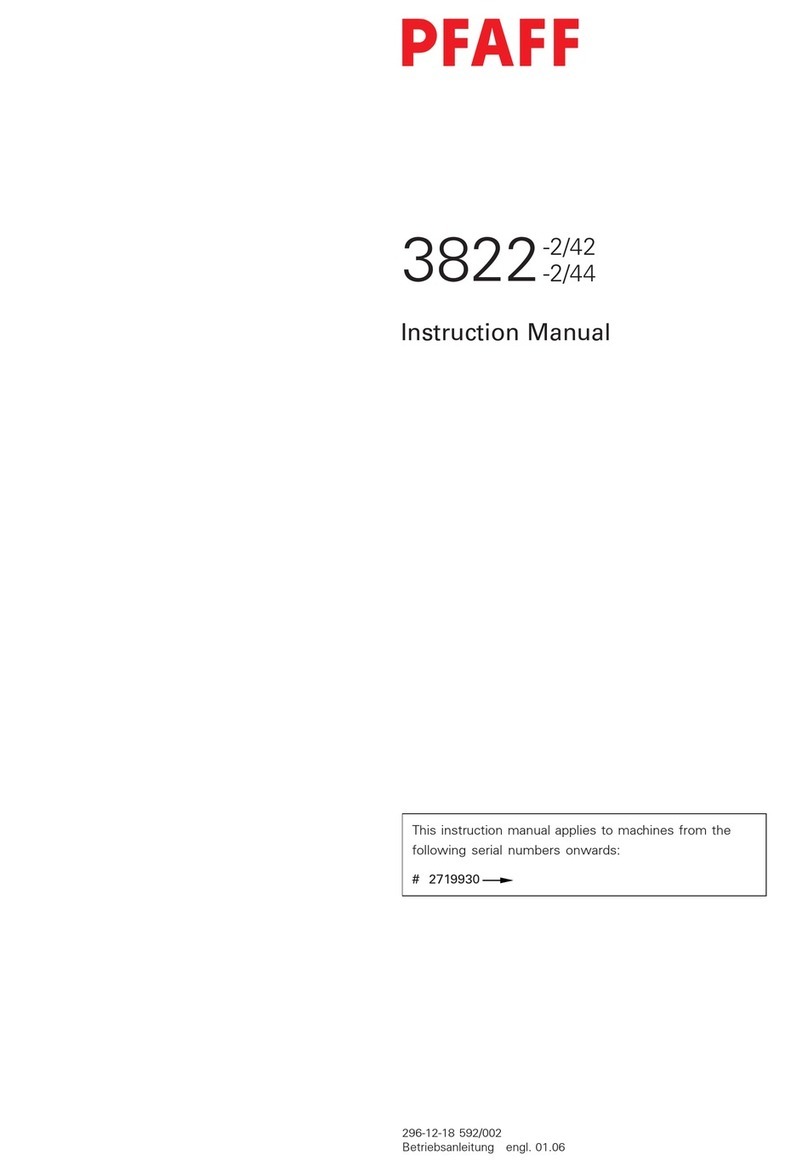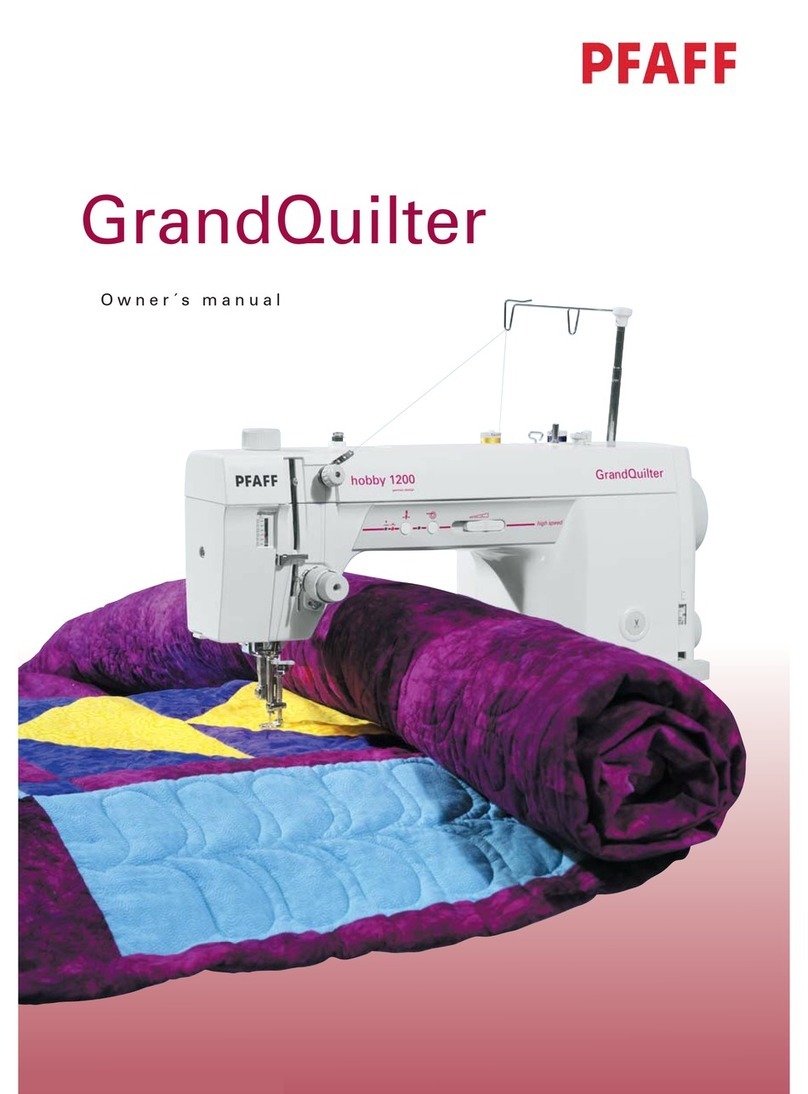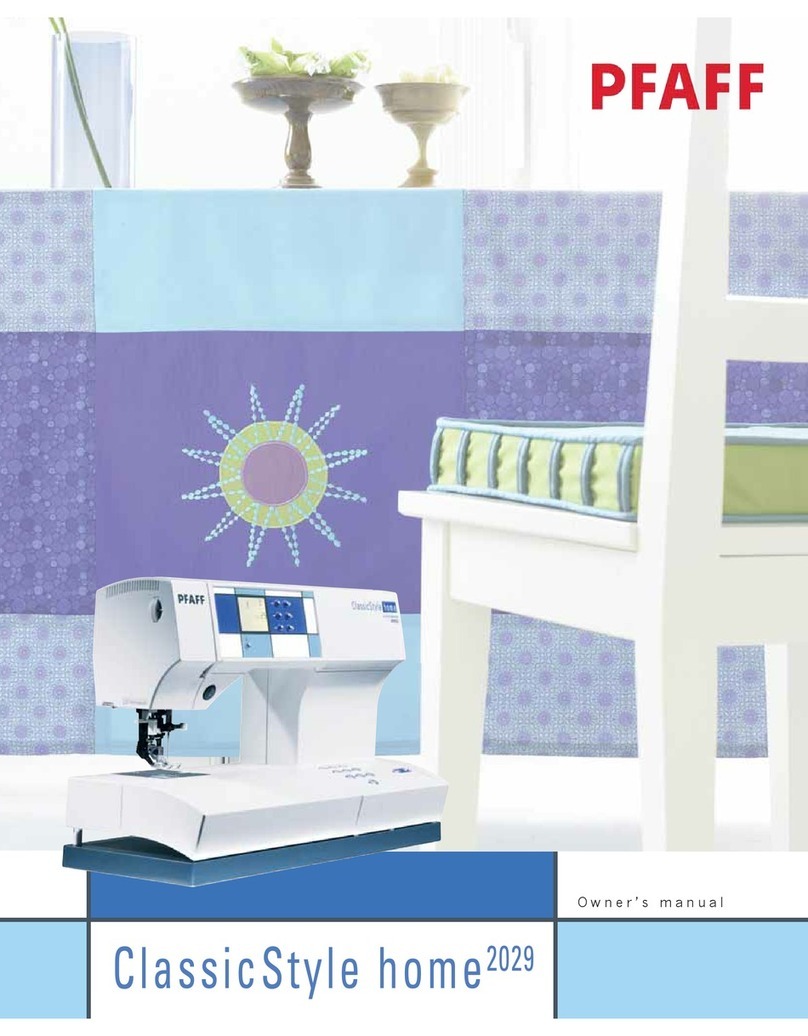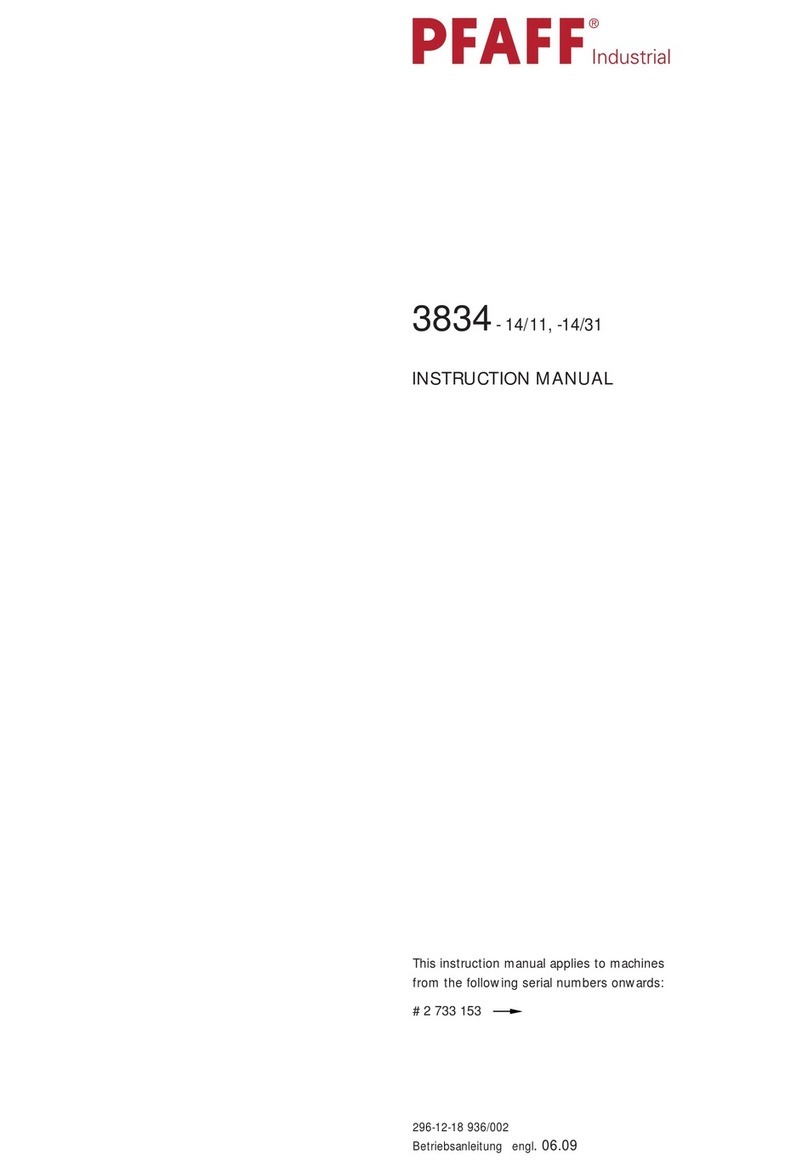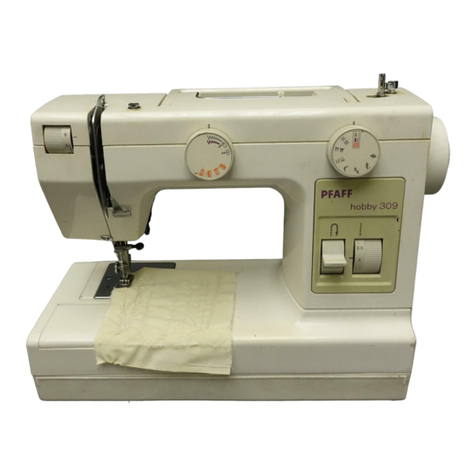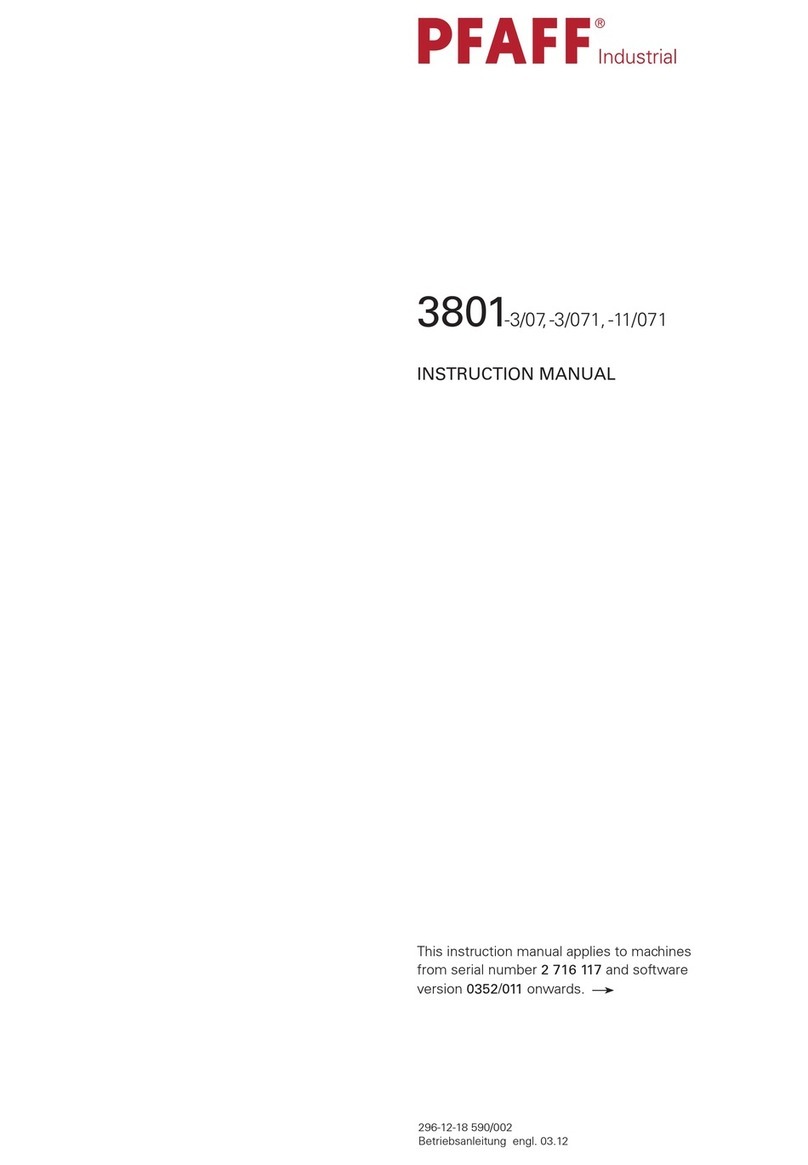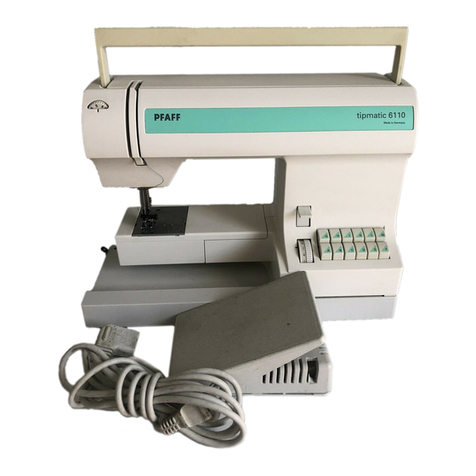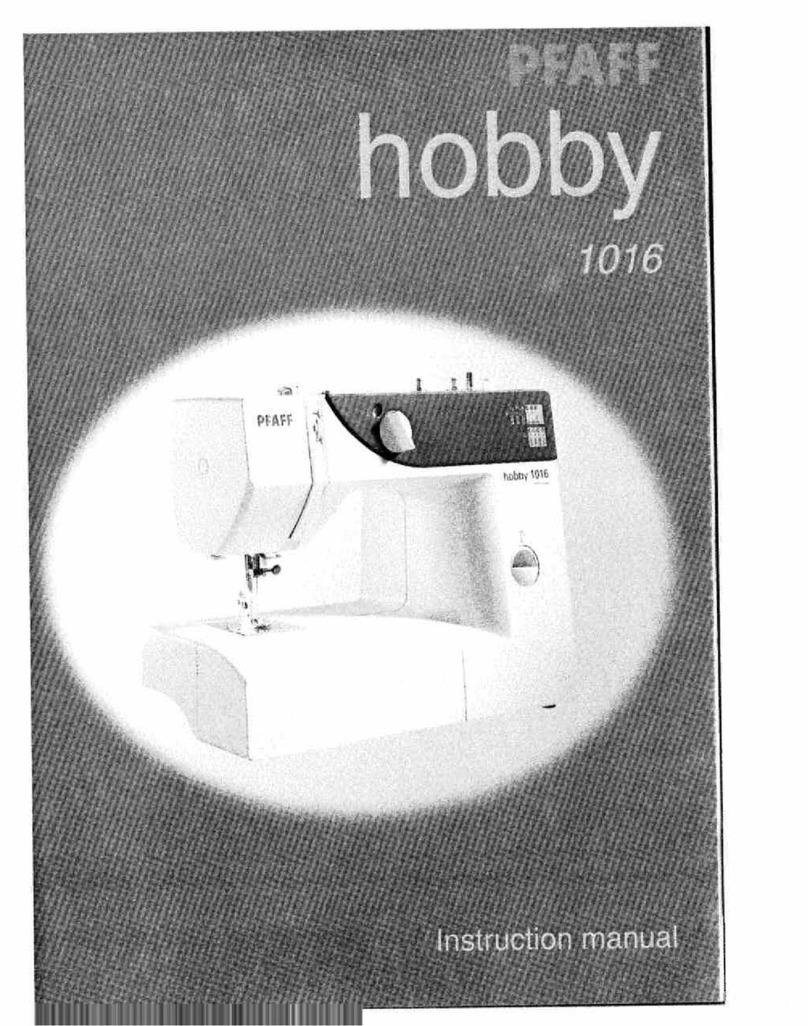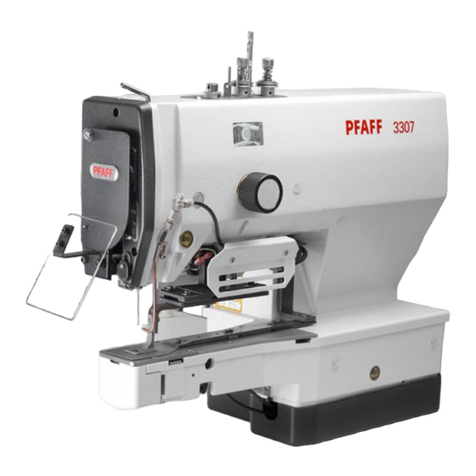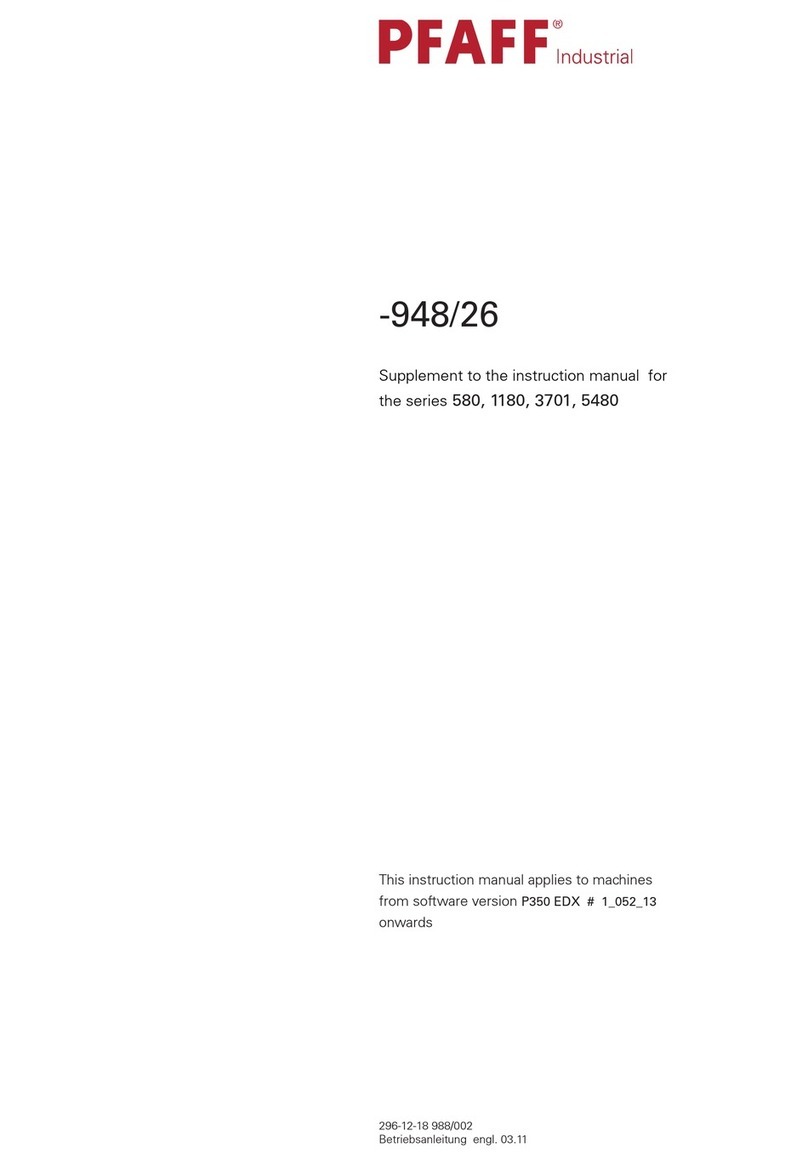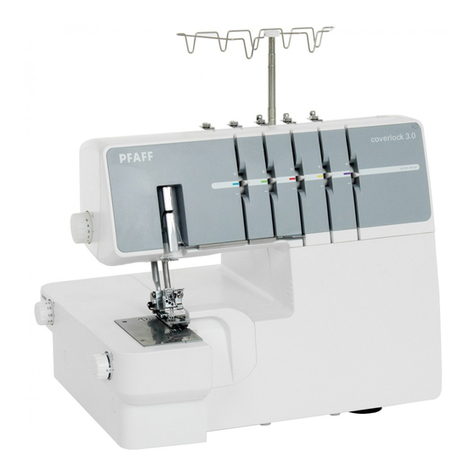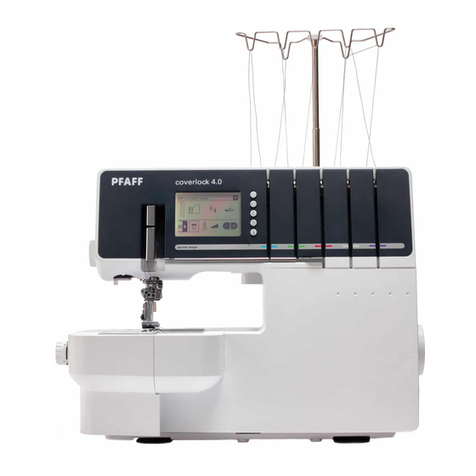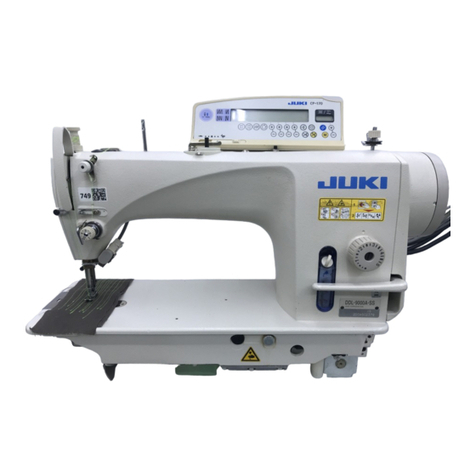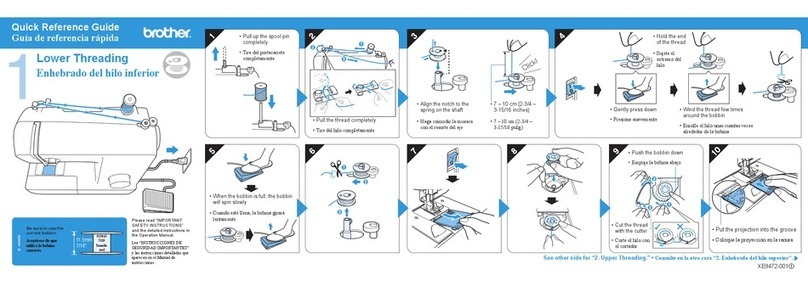Contents
Contents ..................................................................................Chapter - Page
8.03 Mounting the flange motor (PFAFF 333-712/02) ............................................................. 8 - 4
8.03.01 Mounting the flange motor to the bearing plate .............................................................. 8 - 4
8.03.02 Mounting the flange motor to the machine .................................................................... 8 - 5
8.03.03 Mounting the belt guard of the flange motor .................................................................. 8 - 5
8.04 Connecting the plug-in connections and earth cables (only PFAFF 333-712/02) ............. 8 - 6
8.05 Commissioning ............................................................................................................. 8 - 6
8.06 Switching the machine on/off ........................................................................................ 8 - 6
8.07 Basic setting of the machine drive unit (only PFAFF 333-712/02) ................................... 8 - 7
9Setting up..................................................................................................................... 9- 1
9.01 Inserting the needle ....................................................................................................... 9 -1
9.02 Winding the bobbin thread, regulating the winder tension .............................................. 9 - 2
9.03 Threading the bobbin thread and regulating the bobbin thread tension ............................ 9 - 3
9.04 Threading the bobbin thread and regulating the bobbin thread tension ............................ 9 - 4
9.05 Threading the gimp thread ............................................................................................. 9 - 4
9.06 Threading needle thread/adjusting needle thread tension
(on the Pfaff 333-712/02) ............................................................................................... 9 - 5
9.07 Threading needle thread/adjusting needle thread tension
(on the PFAFF 333-712/03) ............................................................................................ 9 - 6
9.08 Setting the stitch count function for the bobbin thread control
(only PFAFF 333-712/02) ................................................................................................ 9 - 7
10 Sewing ........................................................................................................................10- 1
11 Care and maintenance ................................................................................................ 11 - 1
11.01 Care and maintenance intervals ...................................................................................11 - 1
11.02 Cleaning .......................................................................................................................11 - 2
11.03 General oiling ................................................................................................................11 - 3
11.04 Oiling the sewing hook .................................................................................................11 - 4
12 Adjustment ..................................................................................................................12 - 1
12.01 Notes on adjustment ....................................................................................................12 - 1
12.02 Tools, gauges and other equipment for adjusting ..........................................................12 - 1
12.03 Abbreviations ................................................................................................................12 - 1
12.04 Adjustment of the basic machine .................................................................................12 - 2
12.04.01 Needle position in needle hole ......................................................................................12 - 2
12.04.02 Needle height (preliminary adjustment) .........................................................................12 - 3
12.04.03 Hook clearance, needle rise and needle height .............................................................12 - 4
12.04.04 Top feed lifting motion ..................................................................................................12 - 5
12.04.05 Top feed stroke .............................................................................................................12 - 6
12.04.06 Needle-thread tension release (on the PFAFF 333-712/02) ............................................12 - 7
12.04.07 Needle-thread tension release (on the PFAFF 333-712/03) ............................................12 - 8
12.04.08 Thread check spring ..................................................................................................... 12 - 9
12.04.09 Bobbin winder ..............................................................................................................12 - 10
